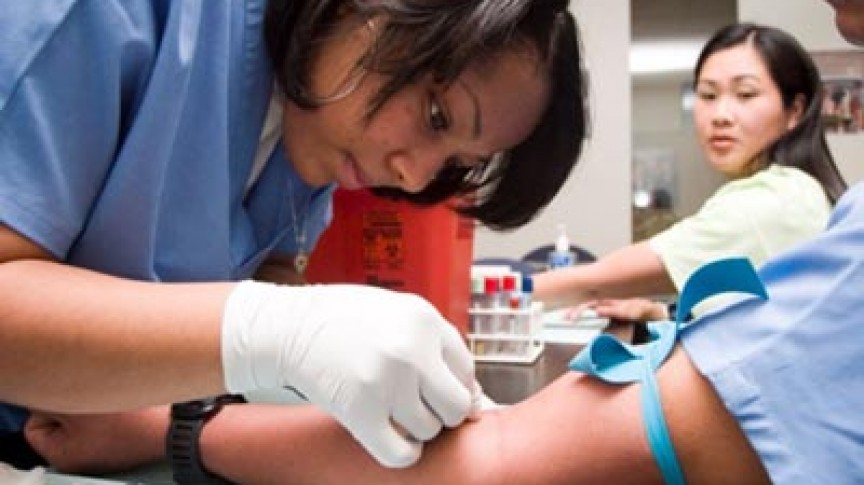Mastering Phlebotomy: Your Essential Guide to Techniques, Safety, and Best practices
Phlebotomy is a crucial aspect of healthcare, involving the collection of blood samples for laboratory testing, transfusions, and donations. With the rising demand for trained professionals in this field,mastering phlebotomy techniques and understanding safety measures is essential. This comprehensive guide is designed to equip you with the knowledge required to excel as a phlebotomist.
The Basics of phlebotomy
Phlebotomy is not just about drawing blood; it’s about understanding the human body, ensuring patient comfort, and adhering to safety protocols. Here are some basic concepts:
- Definition: Phlebotomy is the process of making an incision in a vein to draw blood.
- Purpose: Blood samples can diagnose diseases, monitor health, and guide treatments.
- Key Skills: Communication, technical proficiency, and empathy are vital for accomplished phlebotomy.
Phlebotomy Techniques: A Step-by-Step Guide
Mastering the right technique is crucial for successful blood draws. Below, we outline a simple step-by-step approach:
1. Planning
- Wash and disinfect hands thoroughly.
- Review patient details and medical history.
- Gather necessary equipment: gloves, tourniquet, alcohol swabs, needles, and collection tubes.
2.Patient Interaction
- Introduce yourself and explain the procedure to the patient.
- Ensure patient confidentiality and comfort (e.g., providing a warm blanket, if necessary).
3. The Blood Draw
- Apply the tourniquet 4–6 inches above the venipuncture site.
- Palpate the vein and choose the appropriate site (typically the median cubital vein).
- Clean the area with an alcohol swab and let it dry.
- Insert the needle at a 15-30 degree angle and swiftly push it into the vein.
- Collect blood into the appropriate tubes.
- Remove the tourniquet before withdrawing the needle.
- Apply pressure to the site using gauze, then place a bandage.
4. Post-procedure Care
- Ensure the patient feels stable before leaving.
- Label samples clearly and deliver them to the lab promptly.
Safety Measures in Phlebotomy
Safety is a top priority in phlebotomy. Implementing strict safety protocols minimizes risks for both patients and healthcare providers:
Personal Protective Equipment (PPE)
Always wear appropriate PPE, including gloves, masks, and gowns if necessary, to minimize exposure to bloodborne pathogens.
Needle safety
- Use single-use needles and dispose of them in designated sharps containers.
- Avoid recapping needles after use to prevent accidental sticks.
Infection Control
- Practice hand hygiene before and after each procedure.
- Use aseptic techniques to reduce the risk of infection.
- Regularly clean and disinfect all equipment.
Best Practices for Phlebotomy
Along with mastering techniques and safety, adhering to best practices ensures high-quality venipuncture:
| Best Practice | Description |
|---|---|
| effective Communication | Engage with patients to ease their nerves and explain procedures. |
| continuous Education | Stay updated with the latest advancements and regulations in phlebotomy. |
| Patient Comfort | Ensure patients are comfortable during the procedure to foster cooperation. |
Benefits of Mastering Phlebotomy
Investing time into mastering phlebotomy techniques presents multiple benefits:
- Career Opportunities: Certified phlebotomists are in high demand across hospitals,clinics,and laboratories.
- Patient Impact: Skilled phlebotomists contribute to improved patient experiences and outcomes.
- Professional Growth: Mastering this skill can lead to further opportunities in the healthcare field.
Case Studies: Real-Life Experiences in Phlebotomy
Examining real-life scenarios enhances understanding of effective phlebotomy practices.
Case Study 1: Pediatric Phlebotomy
A pediatric phlebotomist reported using distraction techniques, like showing children a toy or asking them to count. These methods considerably reduced anxiety and made the procedure smoother.
Case Study 2: Geriatric patients
An experienced phlebotomist adjusted her approach for geriatric patients by ensuring the seating arrangement was comfortable and using smaller gauge needles to minimize discomfort.
Conclusion
Mastering phlebotomy requires a blend of technique, safety, and compassionate patient interaction. As healthcare continues to evolve,the need for skilled phlebotomists will only grow. By following the best practices outlined in this guide, you can enhance your capabilities, ensure patient safety, and contribute effectively to the healthcare community. Whether you’re a novice or seasoned professional, embracing continuous learning and adapting to patient needs is key to mastering phlebotomy.
